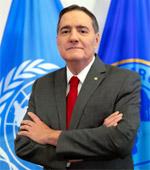Accelerating Disease Elimination
Executive Summary
 © PAHO
© PAHO
What is the Elimination Initiative, and why was it launched?
Since the founding of the Pan American Health Organization (PAHO) in 1902, the Region has made significant progress toward disease elimination. The Americas eliminated smallpox in 1974 (with eradication in 1980). In 1994, the Region was certified as free from poliomyelitis. Over the last several decades, the Region has eliminated a number of other diseases, including rubella, congenital rubella syndrome, and neonatal tetanus.
By the 2010s, the Region of the Americas faced a complex landscape of communicable disease challenges. Despite successes in eliminating various vaccine-preventable diseases, certain issues became more urgent, including climate change, vaccine hesitancy, healthcare inequalities, and novel infectious diseases. Recognizing that existing siloed efforts were insufficient to address these multifaceted problems, PAHO, under the leadership of former Director Carissa Etienne, initiated a bold, comprehensive framework. This initiative integrated services on a broader scale, tackling more than 30 diseases and conditions under one umbrella, while emphasizing a community- and personcentered approach to leave no one behind in the effort to conquer communicable diseases.
In 2019, PAHO and its Member States launched the Elimination Initiative, a comprehensive framework addressing more than 30 diseases and conditions in the Americas. Developed through key regional consultations and expert input, the initiative aimed to tackle broad categories of diseases responsible for the greatest burdens in the Region. However, the COVID-19 pandemic severely disrupted healthcare systems and revealed existing inequalities. Despite these challenges, the pandemic also revealed opportunities for more comprehensive health services. In 2023, current PAHO Director Jarbas Barbosa da Silva Jr. relaunched the Elimination Initiative, viewing it as a critical opportunity to strengthen healthcare systems, recover from pandemic setbacks, and accelerate progress toward universal health in the Americas.
The Elimination Initiative targets selected diseases that represent a significant burden and can be combatted using existing tools and technologies. The initiative also tackles diseases that disproportionally affect communities living in situations of vulnerability due to complex social, economic, and systemic factors. These groups include women; Indigenous peoples; Afrodescendants; rural communities; lesbian, gay, bisexual, and transgender individuals; migrants; and prison populations. As countries progress toward disease elimination, the initiative works to understand and improve the underlying conditions that hinder efforts among these communities.
PAHO developed four lines of action to guide the Elimination Initiative:
- Strengthening the integration of health systems and service delivery;
- Strengthening health surveillance and information systems;
- Addressing the environmental and social determinants of health;
- Strengthening governance, stewardship, and finance.




